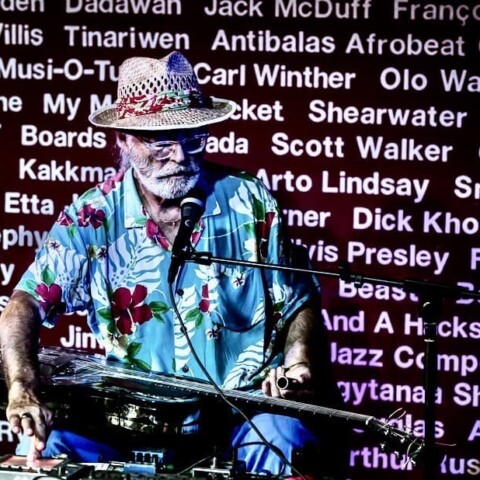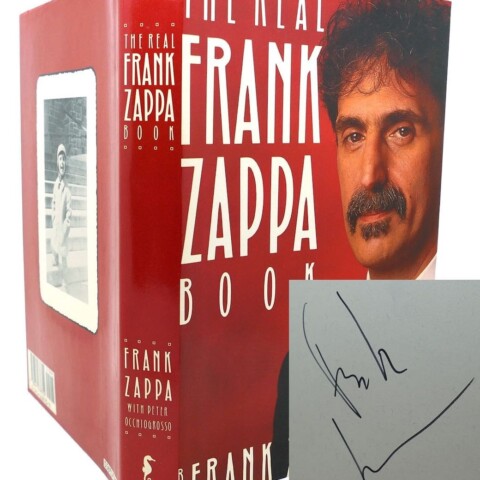THE MOST INTERESTING thing about Michael Kiwanuka’s debut album, for Witchdoctor readers, is the fact that it was produced and recorded in the Isle of White recording studios of Paul Butler, a chap who is famous for his vintage analogue equipment.  Most recently of the rather interesting pop group The Bees, Butler’s 1990s albums with Fretless AZM and other affiliated groups – fusions of jazz and groove and electronica, mostly – still sound fabulous on a good hi-fi.
Most recently of the rather interesting pop group The Bees, Butler’s 1990s albums with Fretless AZM and other affiliated groups – fusions of jazz and groove and electronica, mostly – still sound fabulous on a good hi-fi.
Kiwanuka, whose music is steeped in the difficult-to-pigeon-hole sounds of Bill Withers and other not-quite-soul singers of the ‘70s, certainly made the right choice in recording his album in a studio that could get a pre-digital sound to give it that ‘authentic’ feel.
The difficulty I have with Home Again isn’t the fact that it’s retro, but that after listening to it several times, none of the songs have really stuck with me, or sunk their emotional fangs in below the skin. 
All the moves are right, however: the guy can sing, and it’s hard to fault the musicianship or arrangements, some of which are stunning. And the sound, while lacking the precision and polish of contemporary digital recordings, certainly has a warmth to it that should come across even more acutely on vinyl.
This London-born singer-songwriter is of Ugandan heritage, and got his musical infatuations from the record collections of friends and friends’ parents, and apparently considers the sounds fresh, not retro. So do I: Bill Withers is a real stand-out talent of the ‘70s whose music is defiantly just “Bill Withers music”, which has to be commended. Kiwanuka’s other main influences, such as Otis Redding and Roberta Flack, are exemplary.
Is it a case of a guy with all the right moves, but no songs to match? Or will it just take a few more plays to sink into their charms? For me, the jury is still out, so I’ll give it a modest recommendation, and happily revise my rating if time proves my judgment wanting.
NOTE: Since writing this review, I have listened to the vinyl a couple of times, and compared it with the CD version. Surprisingly, it doesn’t come across as more “organic” than the CD, but the vinyl – and the cover displayed in full 12-inch frame – does suit the retro styling. On becoming more familiar with the album, there are several more observations to make. Producer Butler is a huge part of what makes this record special, and his contributions – multiple instrumental parts, including an array of percussion, on every song – dominate the backing. So, while the melodies and vocals are Kiwanuka’s, the project seems to belong just as much to Butler, whose most distinctive contribution is those raw African-style horn-parts that often run behind the otherwise smooth, slightly bland songs. But despite Butler’s analogue production, it’s not a real hi-fi experience. My guess is that, with both Kiwanuka and Butler layering many sounds onto each song, they’ve lost some fidelity along the way. Had a more conventional producer worked with Kiwanuka, my guess is that this record would be one of those crystal-clear studio concoctions featuring studio sessioneers and Pro-tools, and it would be pretty dull. In other words, Butler adds grit, which invests it with something special to contrast with Kiwanuka’s admittedly excellent vocals. Those vocals, to my ears, sound more and more like they’ve been practicing Ray Charles and even early Joe Cocker (who was obviously himself a big Charles fan). The rub, unfortunately, is that despite multiple plays, I’m still not really FEELING these songs. I can imagine it being very, very popular in cafes and hair salons, though. GARY STEEL
Music = 3.5/5
Sound = 4/5
Gary Steel’s admittedly less than highly spec’d gear includes: Pro-ject Xpression II turntable, Ortofon cartridge, Pro-Ject Phono Box II, Rotel RC-1550 preamp, Yamaha CD-S2000 Super Audio CD Player, and Martin Logan Powered Hybrid Electrostatic Loudspeakers.
* The vinyl of Michael Kiwanuka’s Home Again is available from Southbound Records, a fabulous vinyl-dominated store located at 69 Mt Eden Rd, Auckland.















